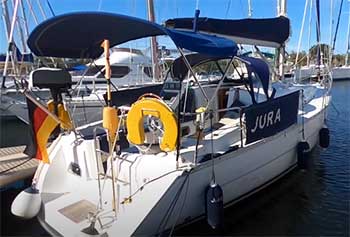As a lifelong boater, I’ve spent countless hours on the water, and one thing I’ve learned is that the right decking can make or break your experience.
Choosing between Aqua Marine Decking and SeaDek, two heavyweights in marine flooring, is no small decision. In this article, I’ll walk you through my journey of comparing these products, breaking down their features, pros, and cons to help you decide which suits your boating lifestyle.
From comfort to durability, I’ve got you covered with a clear, engaging analysis.
A Brief Comparison Table
| Feature | Aqua Marine Decking | SeaDek |
| Material | Closed-cell EVA foam | EVA/PE blend |
| Thickness Options | 6mm, 13mm | 3mm, 5mm, 10mm, 20mm, 23mm |
| Color Options | 10+ colors, customizable | 35+ colors, customizable |
| Traction | Excellent, non-slip wet or dry | Excellent, non-slip wet or dry |
| Installation | Peel-and-stick, professional recommended | Peel-and-stick, complex for DIY |
| Durability | UV-resistant, stain-resistant | UV-resistant, moderate stain resistance |
| Maintenance | Easy, soap and water | Easy, soap and water, occasional scrubbing |
| Cost (per sq. ft.) | $8–$12 | $10–$15 |
| Warranty | 5 years | 3 years |
| Heat Retention | Moderate, can get warm | Low, stays cooler |
My Journey Into Boat Decking Choices
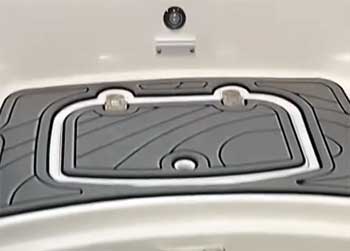
Growing up on the coast, my weekends were spent fishing, cruising, or just soaking in the sun on our family boat.
Back then, we had basic carpet flooring that soaked up water like a sponge and took forever to dry.
When I got my own boat, I knew I wanted something better—something that looked sharp, felt great underfoot, and could handle the harsh marine environment.
That’s when I stumbled across Aqua Marine Decking and SeaDek, two names that kept popping up in boating forums and dockside chats.
Both brands promised comfort, safety, and style, but I wasn’t sold on either until I started digging into what makes them tick.
I’ve installed both on different boats over the years, and I’ve got stories to share—some about flawless days on the water, others about stubborn stains or tricky installs. Let’s break it down so you can make an informed choice for your vessel.
Understanding Aqua Marine Decking
Aqua Marine Decking is like that reliable friend who always shows up when you need them. It’s made from closed-cell EVA foam, which means it doesn’t soak up water, even if it gets scratched or gouged.
The first time I stepped on it, I was impressed by how cushioned it felt—like walking on a yoga mat, but grippy enough to keep me steady when the deck was slick with saltwater.
Key Features of Aqua Marine Decking
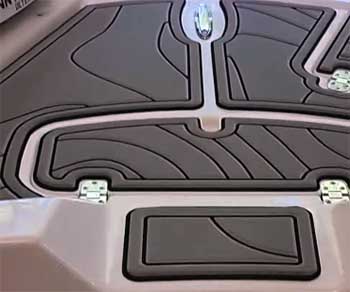
- Non-Slip Surface: Whether it’s wet from a rogue wave or dry under the summer sun, this stuff grips like nobody’s business. I’ve had kids running around on my boat, and not one has taken a spill.
- Customization: With over 10 color options and patterns like faux teak or diamond, you can make your boat look like a million bucks. I went with a gray teak pattern that still gets compliments.
- UV Resistance: Living in a sunny state, I worried about fading. After three years, my Aqua Marine deck still looks vibrant, with no chalky patches.
- Easy Maintenance: A quick scrub with soap and water, and it’s good as new. I’ve hosed off fish blood and sunscreen smudges without breaking a sweat.
Pros of Aqua Marine Decking
- Comfort: The cushioning is a game-changer for long days on the water. My knees and back thank me after a full day of fishing.
- Durability: It’s tough against UV rays, saltwater, and stains. I spilled some red wine once (don’t ask), and it wiped right off.
- Cost-Effective: At $8–$12 per square foot, it’s generally cheaper than SeaDek, especially for larger boats.
- Warranty: A solid 5-year warranty gives peace of mind. I haven’t needed it, but it’s nice to know it’s there.
Cons of Aqua Marine Decking
- Limited Thickness Options: Only 6mm and 13mm are available. If you want something super thick for extra cushion, you’re out of luck.
- Heat Retention: On scorching days, it can get toasty underfoot. I’ve had to throw on sandals when the sun’s beating down.
- Installation Challenges: While it’s peel-and-stick, getting it perfect around curves and hatches can be tricky. I recommend a pro for complex layouts.
Exploring SeaDek
SeaDek, on the other hand, is the rockstar of marine flooring. It’s been around longer, with a reputation built in the surfing industry before it took over the boating world.
When I first installed SeaDek on my center console, I was blown away by how sleek it looked—like my boat had just rolled out of a showroom.
Key Features of SeaDek
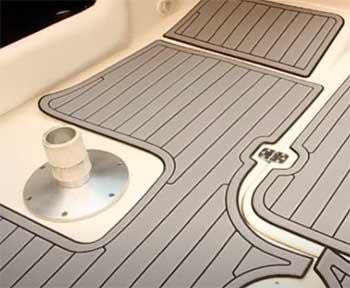
- EVA/PE Blend: This mix makes SeaDek slightly denser than pure EVA, giving it a unique feel. It’s cushioned but firmer than Aqua Marine.
- Extensive Customization: With 35+ colors and patterns, plus options for laser-etched logos or fish graphics, you can go wild. I chose a two-tone blue hexagon pattern that’s still a head-turner.
- Traction: Like Aqua Marine, it’s non-slip in all conditions. I’ve never felt unsteady, even during rough seas.
- Heat Dissipation: SeaDek stays cooler than most competitors, which is a blessing in hot climates.
Pros of SeaDek
- Variety of Thicknesses: From 3mm to a beefy 23mm, you can tailor the cushioning to your needs. I went with 10mm for a balance of comfort and stability.
- Aesthetic Appeal: The color and pattern options are unmatched. It’s like designing a custom suit for your boat.
- Brand Reputation: SeaDek’s been the gold standard for years, and their quality control is top-notch. My installation was flawless.
- Cooler Surface: Even on 90-degree days, it doesn’t burn your feet. I’ve walked barefoot comfortably while others were hopping around.
Cons of SeaDek
- Pricey: At $10–$15 per square foot, it’s a bigger investment. My 24-foot boat cost nearly $1,500 to deck out.
- Stain Susceptibility: Light colors show dirt and grease more than I’d like. A gray SeaDek I saw on a friend’s boat had some stubborn spots after a fishing trip.
- Complex Installation: The adhesive is unforgiving—once it’s down, it’s down. I messed up a small piece and had to order a replacement.
- Shorter Warranty: Three years feels stingy compared to Aqua Marine’s five.
Head-to-Head Comparison of Aqua Marine Decking And SeaDek
Now that we’ve covered the basics, let’s put these two side by side in the areas that matter most to boaters like you and me.
- Material and Durability
Aqua Marine’s closed-cell EVA foam is a workhorse. It’s resistant to UV rays, saltwater, and stains, making it ideal for heavy use. I’ve had it on a fishing boat that sees 50+ trips a year, and it’s held up beautifully.
SeaDek’s EVA/PE blend is denser, which some say makes it more durable, but I’ve noticed it’s more prone to staining, especially lighter colors. A buddy of mine had to replace a section of his SeaDek after just two years because of grease marks that wouldn’t budge.
If you’re in a harsh environment, Aqua Marine might edge out slightly for longevity.
- Traction and Safety
Both products are stellar when it comes to grip. I’ve tested them in pouring rain, with wet shoes, and even after a kid spilled soda on the deck—neither let me down.
Aqua Marine feels a tad softer, which I prefer for long days, while SeaDek’s firmer surface gives a bit more confidence in rough conditions. You can’t go wrong with either, but if you’ve got a high-traffic boat with kids or pets, Aqua Marine’s softer feel might be the winner.
- Comfort
Comfort is where these products shine. Aqua Marine’s cushioning is like walking on clouds, reducing fatigue on my legs during marathon fishing sessions. SeaDek is cushioned too, but its denser foam feels less plush.
If you’re standing for hours, Aqua Marine might be kinder to your joints. That said, SeaDek’s range of thicknesses lets you dial in the exact feel you want, which is a big plus for customization nerds like me.
- Aesthetics and Customization
SeaDek takes the crown for looks. With 35+ colors, multiple textures (brushed or embossed), and unique patterns like fish scales or hexagons, it’s a designer’s dream. I spent hours on their website dreaming up combinations.
Aqua Marine offers solid options—10+ colors and classic patterns like faux teak—but it feels more limited. If you want a showstopper boat, SeaDek’s your pick. If you’re after a clean, functional look, Aqua Marine delivers without overwhelming you with choices.
- Installation
Installation is where things get spicy. Both are peel-and-stick, but neither is a walk in the park for DIYers. Aqua Marine’s adhesive is strong but slightly more forgiving, letting you reposition if you’re quick. SeaDek’s 3M adhesive is like superglue—once it’s down, good luck moving it.
I botched a corner piece on my SeaDek install and had to eat the cost of a new sheet. For both, I’d recommend a professional unless you’re handy and patient.
Aqua Marine’s simpler designs make it a bit easier for amateurs, but complex layouts (think drain holes or curved edges) are best left to the pros.
- Maintenance
Keeping these decks clean is a breeze, but there are differences. Aqua Marine shrugs off most stains—fish blood, sunscreen, you name it—with a quick hose-down. SeaDek is easy to clean too, but lighter colors can show water spots or grease if you’re not diligent.
I use a mild soap and a soft brush for both, but SeaDek sometimes needs an extra scrub. Neither requires heavy maintenance, but Aqua Marine’s stain resistance gives it a slight edge.
- Cost and Value
Cost is a big factor for most of us. Aqua Marine is generally $2–$3 cheaper per square foot, which adds up on a bigger boat. My 24-footer would’ve cost about $1,200 with Aqua Marine versus $1,500 with SeaDek.
SeaDek’s higher price comes with more customization and a premium brand name, but I’m not convinced it’s always worth the extra cash. Aqua Marine’s longer warranty and comparable performance make it a better value for budget-conscious boaters.
- Heat Retention
Living in a hot climate, I’m sensitive to decking that turns into a frying pan. SeaDek’s EVA/PE blend dissipates heat better, staying comfortable even on blistering days.
Aqua Marine can get warm—not unbearable, but enough that I’ve grabbed sandals on 95-degree afternoons. If you boat in cooler climates, this might not matter, but for southern boaters, SeaDek’s cooler surface is a win.
Real-World Experiences
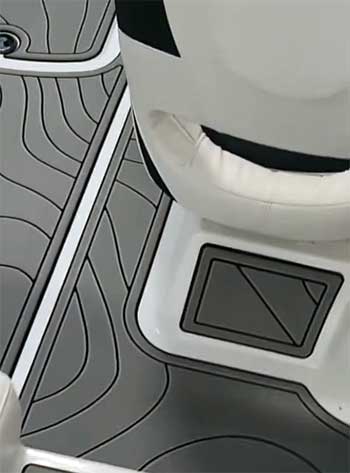
To give you a fuller picture, I’ve talked to other boaters and scoured forums like Cobaltchat.com and The Hull Truth.
One Cobalt owner raved about SeaDek’s look but grumbled about the cost, saying he could’ve bought two Aqua Marine kits for the price.
Another fisherman in the Pacific Northwest swore by Aqua Marine for its easy cleanup after messy trips, though he noted it got slick in freezing fog.
A SeaDek user in Florida loved how cool it stayed but admitted light gray was a mistake—stains showed up too easily.
My own experience mirrors these.
On my fishing boat, Aqua Marine’s stain resistance and softer feel were perfect for long, messy days.
On my cruiser, SeaDek’s sleek design and cooler surface made it the star of dockside parties.
Your boat’s use case—fishing, cruising, or watersports—will tip the scales.
Making Your Decision
Choosing between Aqua Marine Decking and SeaDek comes down to your priorities. If you want maximum customization, a cooler surface, and don’t mind the price, SeaDek’s your go-to. If you’re after value, stain resistance, and a softer feel, Aqua Marine is hard to beat.
Think about your boating habits: Do you fish in rough conditions? Cruise in style? Deal with kids and pets? Factor in your budget and whether you’re DIYing or hiring a pro.
For me, Aqua Marine edged out slightly because of its cost and durability, but I can’t deny SeaDek’s wow factor. Whatever you choose, both will transform your boat into a safer, comfier, and sharper-looking vessel.
You can’t really go wrong—just pick the one that fits your vibe.
Frequently Asked Questions (FAQ)
Aqua Marine Decking is a top alternative, offering similar comfort and traction at a lower cost with better stain resistance.
AquaTraction typically lasts 5–7 years with proper care, depending on usage and environmental conditions.
AquaTraction and PlasDECK synthetic teak are among the most durable, with Aqua Marine and SeaDek also performing well.
SeaDek lasts 5–7 years with regular maintenance, though heavy use or sun exposure may shorten this.
Conclusion: Your Boat, Your Choice
You’re standing at the helm of a big decision, and I hope my journey through Aqua Marine Decking and SeaDek has given you clarity. Both are fantastic, but they cater to slightly different needs. Weigh your budget, boating style, and aesthetic goals.
Whether you go with Aqua Marine’s value and durability or SeaDek’s style and cool comfort, you’re upgrading your boat in a big way. Hit the water with confidence, knowing your deck’s got your back.
